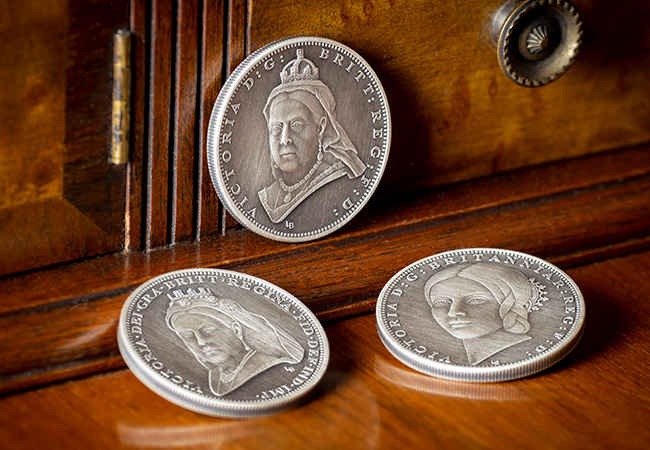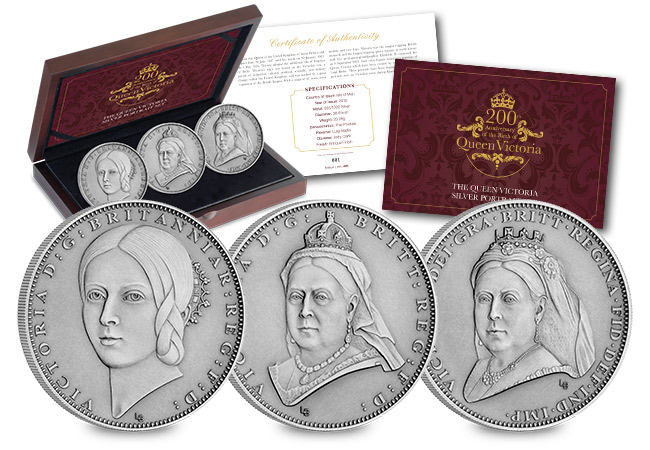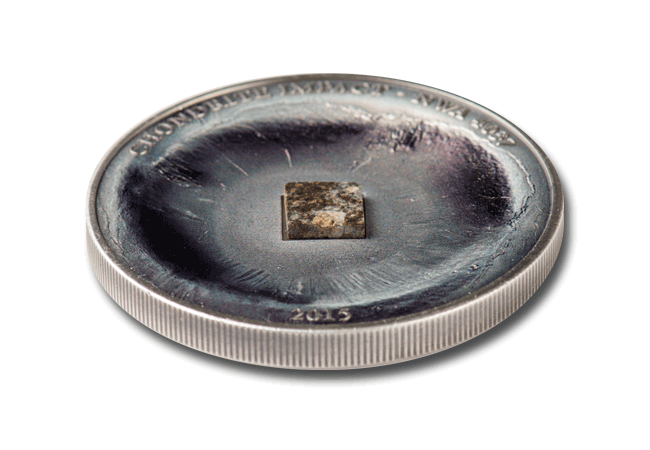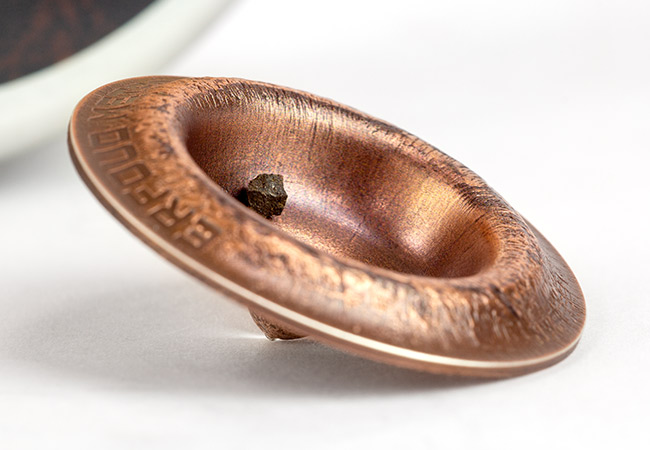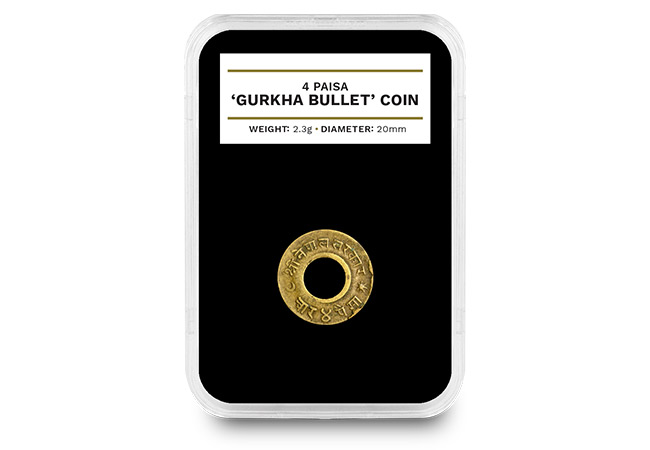Shop
What goes in to developing not one but THREE brand new portraits…
It’s surprising, in this new digital age, just how ‘hands-on’ designing a coin is. In fact, it’s very much the job of a master craftsman.
Never was this more evident than when the Isle of Man Treasury chose to mark the 200th Anniversary of the birth of Queen Victoria with three new coins, each with a brand new portrait.
The man they turned to was renowned sculptor Luigi Badia and here’s the remarkable process of how these coins were developed.
First Stage – Pencil designs
Like most products across all industries, designing a coin starts with pencil sketches. These are then amended, potentially many times, until a final sketch is produced and approved.
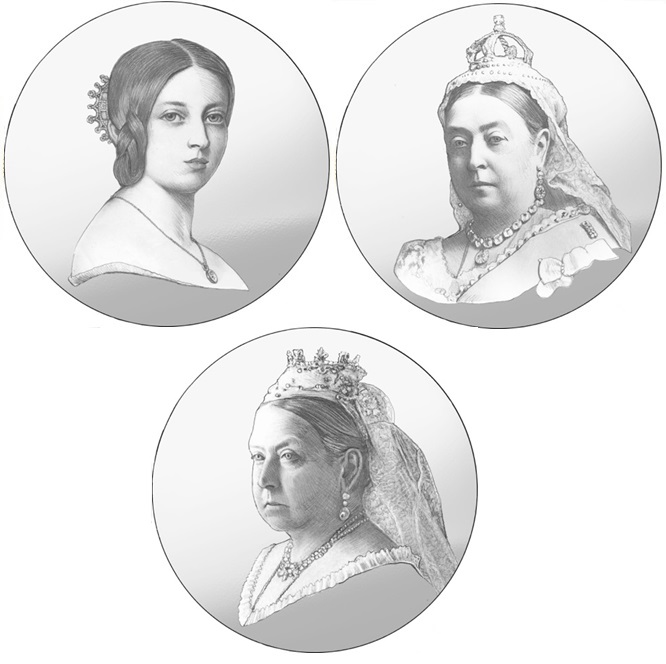
Second Stage – Plaster modelling
The second stage is arguably the most visually stunning. The sculptor, Luigi Badia in this case, will turn their sketches into a 3D ‘Plaster’ design. The skill involved in this process is really very impressive as every tiny detail must be modelled.
The plaster is far larger than the actual coin size to allow for this detail to be captured. The design will be resized in the next step of the process.

Third Stage – Digital Modelling
It’s during this stage where technology has certainly helped the design process. The 3D ‘Plaster’ designs are scanned and a digital file, called a greyscale, is created.
An engraving machine then uses this file to cut the design into a piece of steel that’s the actual size of the final coin. This will then be used to make the dies that will actually strike the coins.
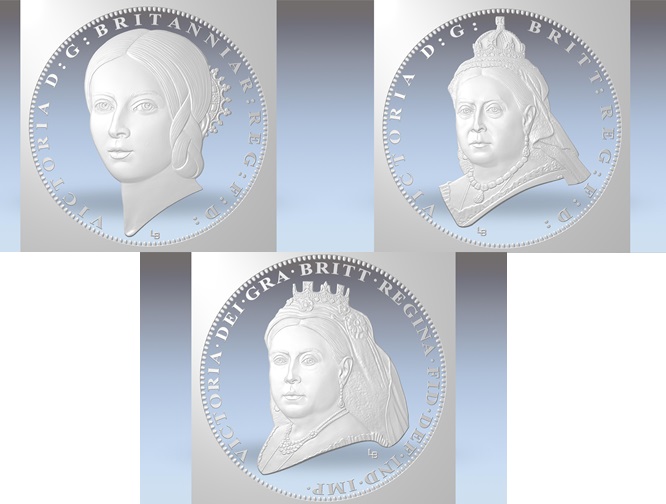
Fourth Stage – Coin Striking
This final stage is when the physical coin comes to life. The specially prepared die is used to ‘strike’ the design onto a metal ‘blank’. The metal used for the blank can vary widely, from cupro-nickel to silver and gold.
Only once the mint is perfectly happy with the quality of the struck coins will they be issued.
The Queen Victoria Silver Antique £5 Set
This set is the only way to own all three of these stunning, specially commissioned Antique Silver £5 Coins.
Just 495 of these stunning sets are available worldwide and exclusive to The Westminster Collection.
You can secure yours today for a down payment of just £54 >>
Near Miss Day: A look at the coins making the biggest impact…

30 years ago today the Earth was NEARLY hit by an asteroid.
The asteroid named (4581 Asclepius) spanned an incredible 300 meters in width and came within a mere 500,000 miles of colliding with Earth! Unbeknownst to many at the time, a collision with a meteor this size would have caused cataclysmic destruction, with a 5 to 10 mile crater being formed if it had hit land and devastating tidal waves had it hit sea.
Now 30 years on from that all to close ‘near miss’ day, we take a look at some unique coins that feature genuine pieces of meteorite. They’ve fascinated both us and collectors so much, that it comes as no surprise that coins below have completely SOLD OUT.
Take a look here…
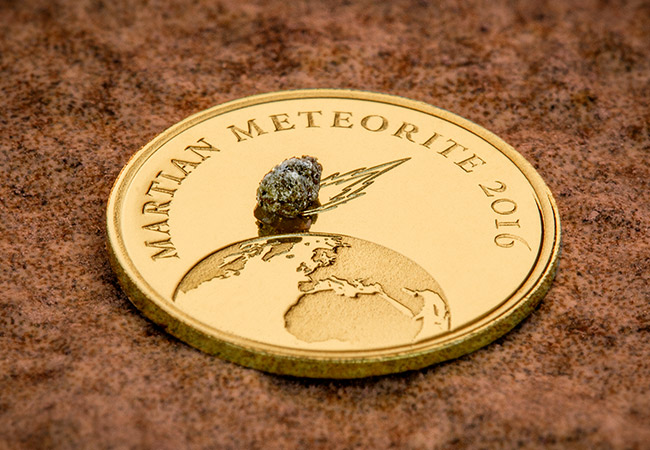
The Mars Meteorite Gold Proof Coin
SOLD OUT
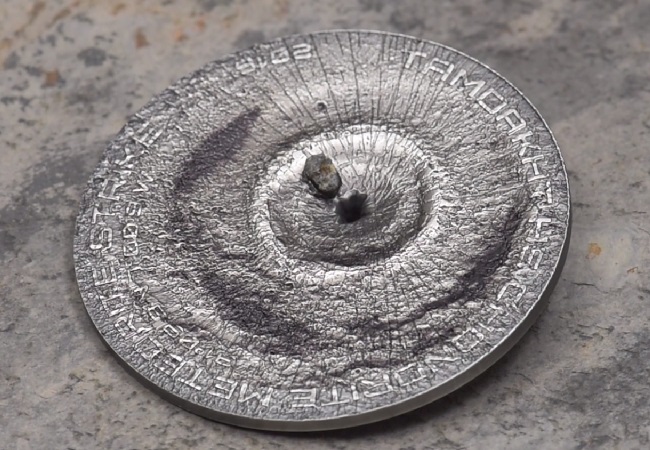
The Tamdakht Strike Silver Coin
SOLD OUT
The Chondrite Meteorite Impact Silver Coin
SOLD OUT
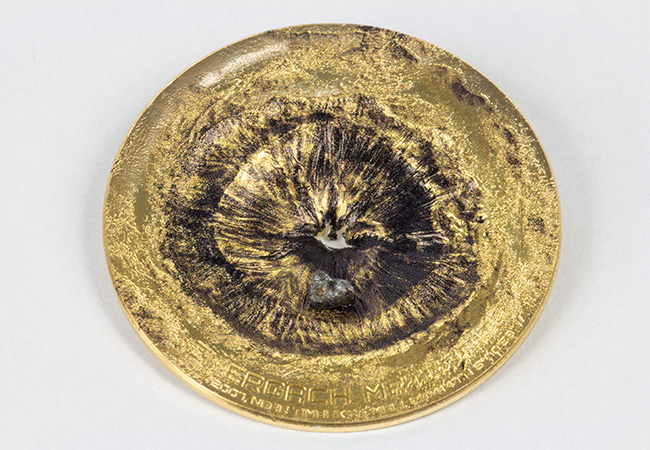
The Chergach Meteorite Breakthrough Silver Coin
SOLD OUT
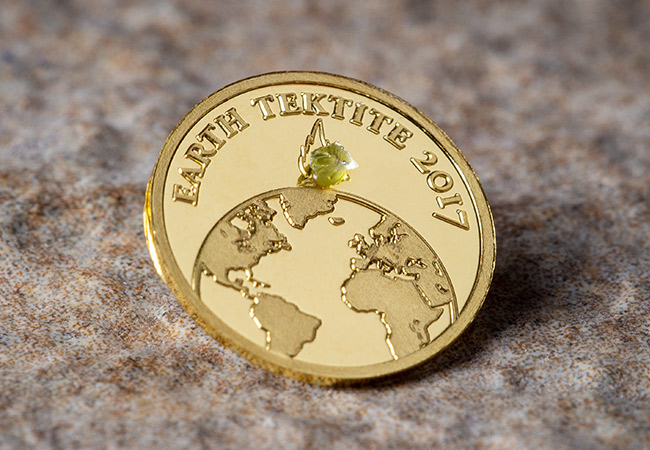
The Earth Meteorite Gold Proof Coin
SOLD OUT
A near miss 30 years ago, a direct hit with collectors now…
Following successive sell-outs, a new coin has been issued. The Erfoud Meteorite Strike Silver Coin is now available and already popular amongst collectors.
With a remarkable design of a meteorite puncturing the face of the coin, giving some perspective to the near miss 30 years ago, this truly unique coin features a genuine fragment of a Moroccan meteorite within the crater of the coin.
A simply stunning coin, the Erfoud Meteorite Silver Strike is without doubt, one of the finest examples of Smartminting technology with unprecedented levels of intricate detail and an extraordinary high relief.
However a very small number of only 2,500 have been issued worldwide which most certainly won’t satisfy demand. To compare, the Mars Meteorite Coin had a worldwide edition limit of just 5,000 which quickly sold out. Given this extraordinary issue’s edition limit is half, it is clear the Erfoud Meteorite Strike Silver Coin won’t be available for long.
What’s more, we have JUST 75 of these hugely sought-after Erfoud Meteorite Strike Silver coins available for collectors. Given the previous sell-outs of meteorite coins like this, you will have to move fast to secure one for collection. Don’t make this another near miss.
If you’re interested…
Click here to find out more about The Erfoud Meteorite Strike Silver Coin now >>
The coins struck with WWII bullets collected from the battlefield…
When I first heard the story behind the 1955 4 Paisa coins I could hardly believe it. They’re genuinely some of the most incredible coins I’ve ever seen.
The Nepalese 4-Paisa coin was minted from spent brass World War II rifle bullet casings left by the famous Gurkha soldiers.
This is the fascinating story behind their minting…
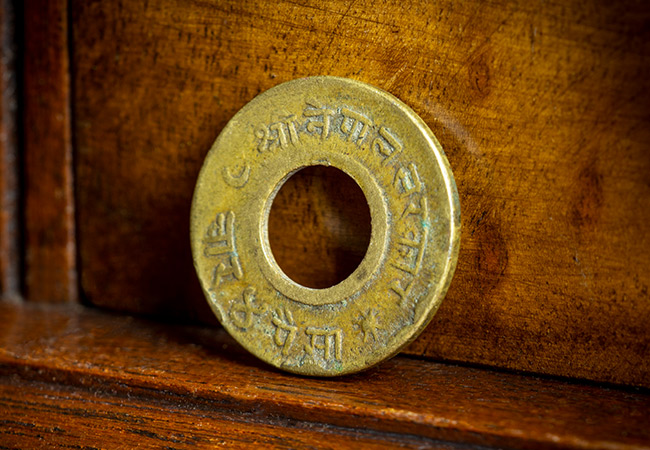
The story of these coins originates from the battlefields of Asia. After the war in the East was over, a General in the Nepalese army discovered a number of empty cartridge cases that had been stored in a government unit behind Tangal Palace in Kathmandu.
These used rifle cartridges came from Gurkha and Nepalese soldiers fighting for the Allies on the Assam and Burma fronts where they had valiantly battled the Japanese. Although it is not clear by whom or for what purpose the used cartridges had been collected from the WWII battlefields, it seems that they had been forgotten and left to rust.
It’s incredible that these pieces of history could simply be forgotten, so the General decided to find a way of paying tribute to the soldiers who had left them behind.
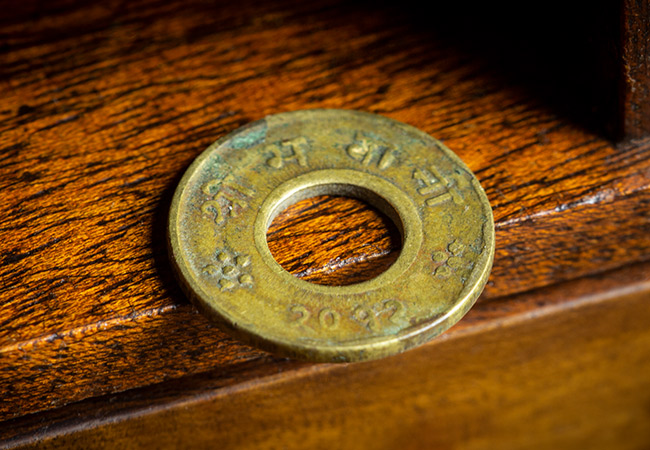
It just so happened that the General who discovered these casings was related to the head of the Government Mint in Nepal. The General suggested to the Mint that these used cartridges should be struck into coins as a way of paying homage to the Gurkha soldiers.
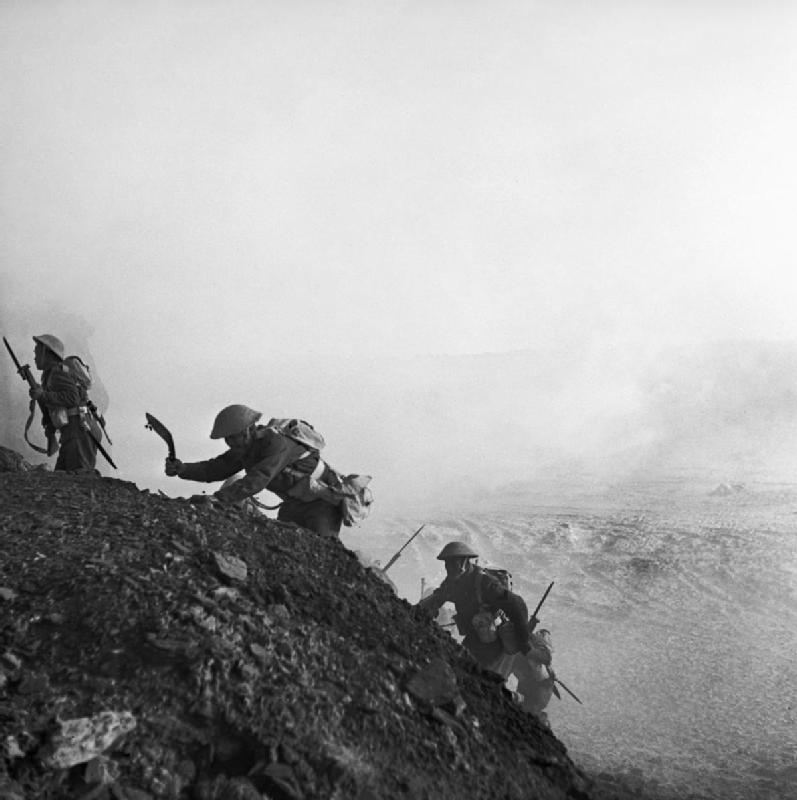
Gurkhas advance through a smokescreen up a steep slope, 16 March 1943 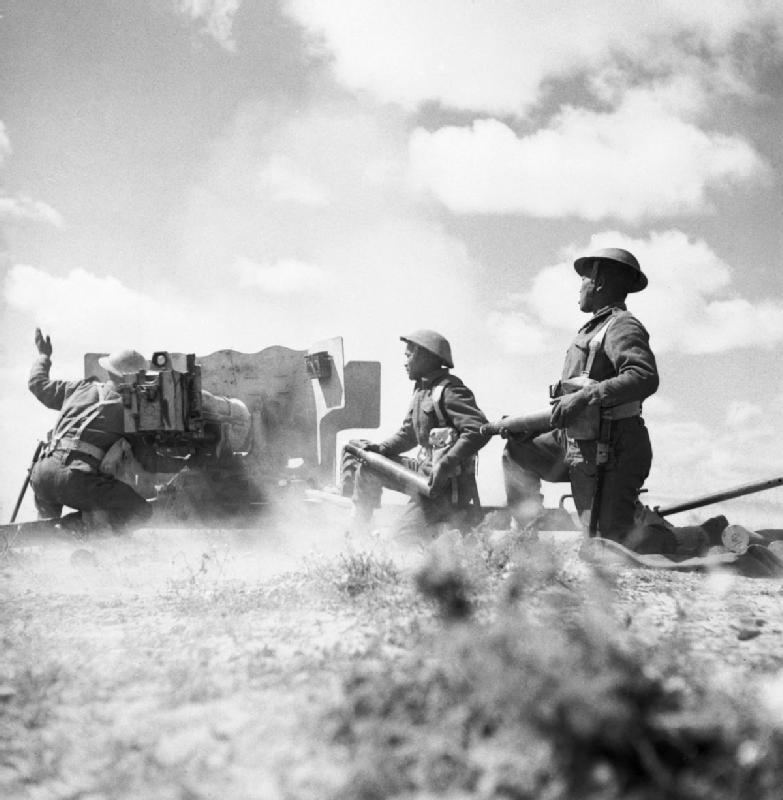
Gurkhas in action with a 6-pdr anti-tank gun, 16 March 1943
So, in 1955 the 4 Paisa coin was duly minted from these very cartridge shells which had once been in the middle of the intense fighting of WWII. They now stand as a lasting tribute to the brave Gurkha regiment that fought so valiantly for the Allies.
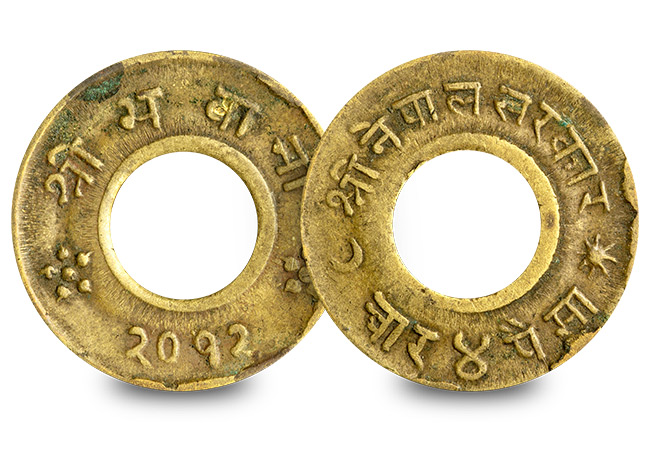
And what’s more, they also hold huge significance as a numismatic collector’s piece. As the number of empty shells was extremely limited, these incredible coins were issued for just one-year-only before the supply was completely exhausted.
The story behind these coins is incredible – not only were they struck from genuine bullet shells, but were also minted to pay tribute to one of the most highly respected fighting forces in the world.
If you’re interested…
Today you have the chance to own one of these Gurkha Bullet coins for JUST £24.99 (+p&p). Act now to secure this incredible piece of history for your collection!

